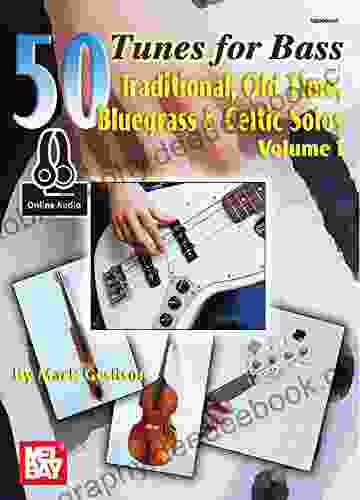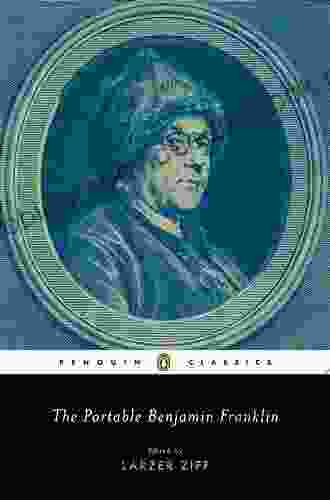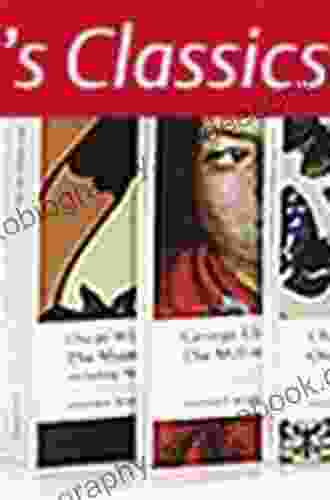Putting Theory Into Practice For The 21st Century Theatre Classroom: Unlocking Student Potential Through Experiential Learning

5 out of 5
| Language | : | English |
| File size | : | 2069 KB |
| Text-to-Speech | : | Enabled |
| Screen Reader | : | Supported |
| Enhanced typesetting | : | Enabled |
| Word Wise | : | Enabled |
| Print length | : | 194 pages |
In the rapidly evolving landscape of the 21st century, education is facing unprecedented challenges and opportunities. To prepare students for the demands of a globalized and technologically advanced world, educators are seeking innovative approaches that foster critical thinking, creativity, and problem-solving skills. In the theatre classroom, experiential learning has emerged as a powerful tool for bridging the gap between theory and practice, allowing students to apply their knowledge in meaningful and engaging ways.
Experiential learning is a hands-on approach to education that emphasizes active participation, reflection, and critical analysis. It involves students in real-world experiences that allow them to test their theories, develop new skills, and gain a deeper understanding of the subject matter. In the theatre classroom, experiential learning can take many forms, including:
- Project-based learning: Students work in teams to create original theatre productions, from scriptwriting to performance. This allows them to apply their knowledge of theatre theory and practice, while also developing their teamwork, communication, and problem-solving skills.
- Simulations: Students participate in simulated theatre experiences, such as auditioning for a role or directing a scene. This allows them to practice their skills in a controlled environment, without the pressure of a live performance. Simulations can also be used to explore different aspects of theatre, such as stage management, lighting, and sound design.
- Community partnerships: Students collaborate with local theatre companies, schools, and community organizations on theatre projects. This allows them to connect their learning to the real world, while also gaining valuable experience in the field.
There are many benefits to using experiential learning in the theatre classroom. First, it helps students to develop a deeper understanding of theatre theory and practice. By applying their knowledge in a hands-on setting, students can see how different theories work in practice and gain a more nuanced understanding of the art form. Second, experiential learning fosters critical thinking and problem-solving skills. Students are constantly faced with challenges and obstacles in the course of their projects, and they must learn to think on their feet and find creative solutions. This prepares them for the challenges they will face in the real world.
Third, experiential learning promotes creativity and self-expression. Students are given the opportunity to experiment with different ideas and techniques, and to develop their own unique voices as artists. This helps them to build confidence in their abilities and to develop a passion for theatre.
Finally, experiential learning can help students to develop important life skills, such as teamwork, communication, and collaboration. Students learn to work together effectively, to communicate their ideas clearly, and to compromise in order to achieve a common goal. These skills are essential for success in any field, and they are particularly valuable in the theatre, where collaboration is essential.
To successfully implement experiential learning in the theatre classroom, teachers need to carefully plan and structure their lessons. This includes setting clear learning objectives, providing students with the necessary resources, and creating a supportive learning environment. Teachers also need to be flexible and adaptable, as experiential learning often involves unexpected challenges and opportunities. However, the rewards of experiential learning are well worth the effort. By providing students with opportunities to apply their knowledge in meaningful and engaging ways, teachers can help them to develop the skills and knowledge they need to be successful in the 21st century.
Strategies for Implementing Experiential Learning in the Theatre Classroom
Here are some specific strategies for implementing experiential learning in the theatre classroom:
- Start with small projects. Don't try to do too much too soon. Start with small, manageable projects that students can complete successfully. As students become more comfortable with experiential learning, you can gradually increase the complexity of the projects.
- Provide clear instructions. Be sure to provide students with clear instructions for each project. This includes setting clear learning objectives, providing students with the necessary resources, and creating a supportive learning environment.
- Be flexible and adaptable. Experiential learning often involves unexpected challenges and opportunities. Be prepared to adjust your plans as needed. The most important thing is to create a learning environment that is conducive to student success.
- Reflect on your experiences. After each experiential learning project, take some time to reflect on your experiences. What went well? What could have been improved? This will help you to improve your teaching practices and to better meet the needs of your students.
Experiential learning is a powerful tool for engaging students and helping them to develop the skills they need to be successful in the 21st century. By providing students with opportunities to apply their knowledge in meaningful and engaging ways, teachers can help them to develop the critical thinking, creativity, and problem-solving skills they need to succeed in any field.
5 out of 5
| Language | : | English |
| File size | : | 2069 KB |
| Text-to-Speech | : | Enabled |
| Screen Reader | : | Supported |
| Enhanced typesetting | : | Enabled |
| Word Wise | : | Enabled |
| Print length | : | 194 pages |
Do you want to contribute by writing guest posts on this blog?
Please contact us and send us a resume of previous articles that you have written.
 Novel
Novel Text
Text Story
Story Genre
Genre E-book
E-book Newspaper
Newspaper Sentence
Sentence Bookmark
Bookmark Shelf
Shelf Glossary
Glossary Foreword
Foreword Preface
Preface Codex
Codex Bestseller
Bestseller Classics
Classics Narrative
Narrative Autobiography
Autobiography Reference
Reference Encyclopedia
Encyclopedia Narrator
Narrator Card Catalog
Card Catalog Periodicals
Periodicals Study
Study Scholarly
Scholarly Lending
Lending Reserve
Reserve Academic
Academic Journals
Journals Reading Room
Reading Room Rare Books
Rare Books Special Collections
Special Collections Interlibrary
Interlibrary Study Group
Study Group Thesis
Thesis Dissertation
Dissertation Awards
Awards Reading List
Reading List Book Club
Book Club Theory
Theory Textbooks
Textbooks Theresa Tomlinson
Theresa Tomlinson Clarice Lispector
Clarice Lispector Dave Robinson
Dave Robinson Barry French
Barry French Harris Tobias
Harris Tobias Mathew Dowling
Mathew Dowling Andrew Lynn
Andrew Lynn Lise Fontaine
Lise Fontaine Mumia Abu Jamal
Mumia Abu Jamal K Tsianina Lomawaima
K Tsianina Lomawaima Devendra N Mehta
Devendra N Mehta 1st Ed 2017 Edition Kindle Edition
1st Ed 2017 Edition Kindle Edition Marina Budhos
Marina Budhos Ken Chan
Ken Chan Farid Mohammed Rashid
Farid Mohammed Rashid Orlando Ricardo Menes
Orlando Ricardo Menes J W Kohler
J W Kohler Paul Bowles
Paul Bowles Joshua Cartwright
Joshua Cartwright Sona Bhatnagar
Sona Bhatnagar
Light bulbAdvertise smarter! Our strategic ad space ensures maximum exposure. Reserve your spot today!

 Isaac AsimovTraditional Old Time Bluegrass and Celtic Solos: A Journey Through Musical...
Isaac AsimovTraditional Old Time Bluegrass and Celtic Solos: A Journey Through Musical... Andres CarterFollow ·15.2k
Andres CarterFollow ·15.2k Camden MitchellFollow ·5k
Camden MitchellFollow ·5k Jesus MitchellFollow ·16.6k
Jesus MitchellFollow ·16.6k Gene SimmonsFollow ·18.4k
Gene SimmonsFollow ·18.4k Gage HayesFollow ·14.7k
Gage HayesFollow ·14.7k Bo CoxFollow ·18.3k
Bo CoxFollow ·18.3k Dwayne MitchellFollow ·19.3k
Dwayne MitchellFollow ·19.3k Logan CoxFollow ·13.1k
Logan CoxFollow ·13.1k

 Fletcher Mitchell
Fletcher MitchellEducation And Peace Montessori 10: Where Learning...
A Symphony of Learning and Well-being Amidst...

 Glen Powell
Glen PowellUnveiling the Wonders of Language and Literacy...
Language and literacy...

 Rod Ward
Rod WardThe Portable Benjamin Franklin: A Timeless Collection of...
In the vast tapestry of American history,...

 Kelly Blair
Kelly BlairDemocracy Versus Authoritarianism in the Post-Pandemic...
The COVID-19...

 Colin Richardson
Colin RichardsonGet Inspired To Shoot Over 130 Poses
Are you looking for...

 Jared Nelson
Jared NelsonEmbark on a Shadowy Journey: The Forbidden Wilds and...
Prologue: A Realm Enshrouded in Darkness As...
5 out of 5
| Language | : | English |
| File size | : | 2069 KB |
| Text-to-Speech | : | Enabled |
| Screen Reader | : | Supported |
| Enhanced typesetting | : | Enabled |
| Word Wise | : | Enabled |
| Print length | : | 194 pages |










